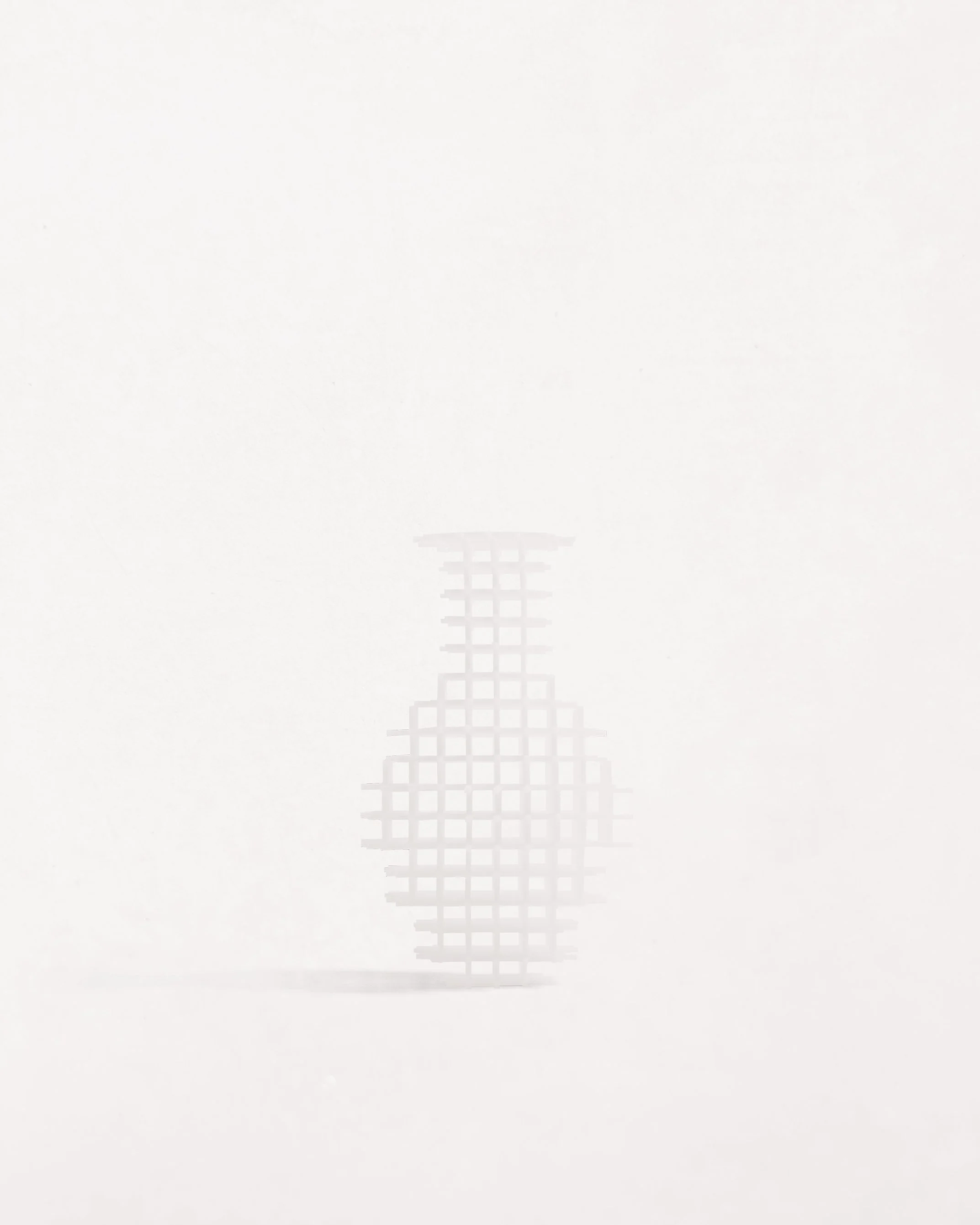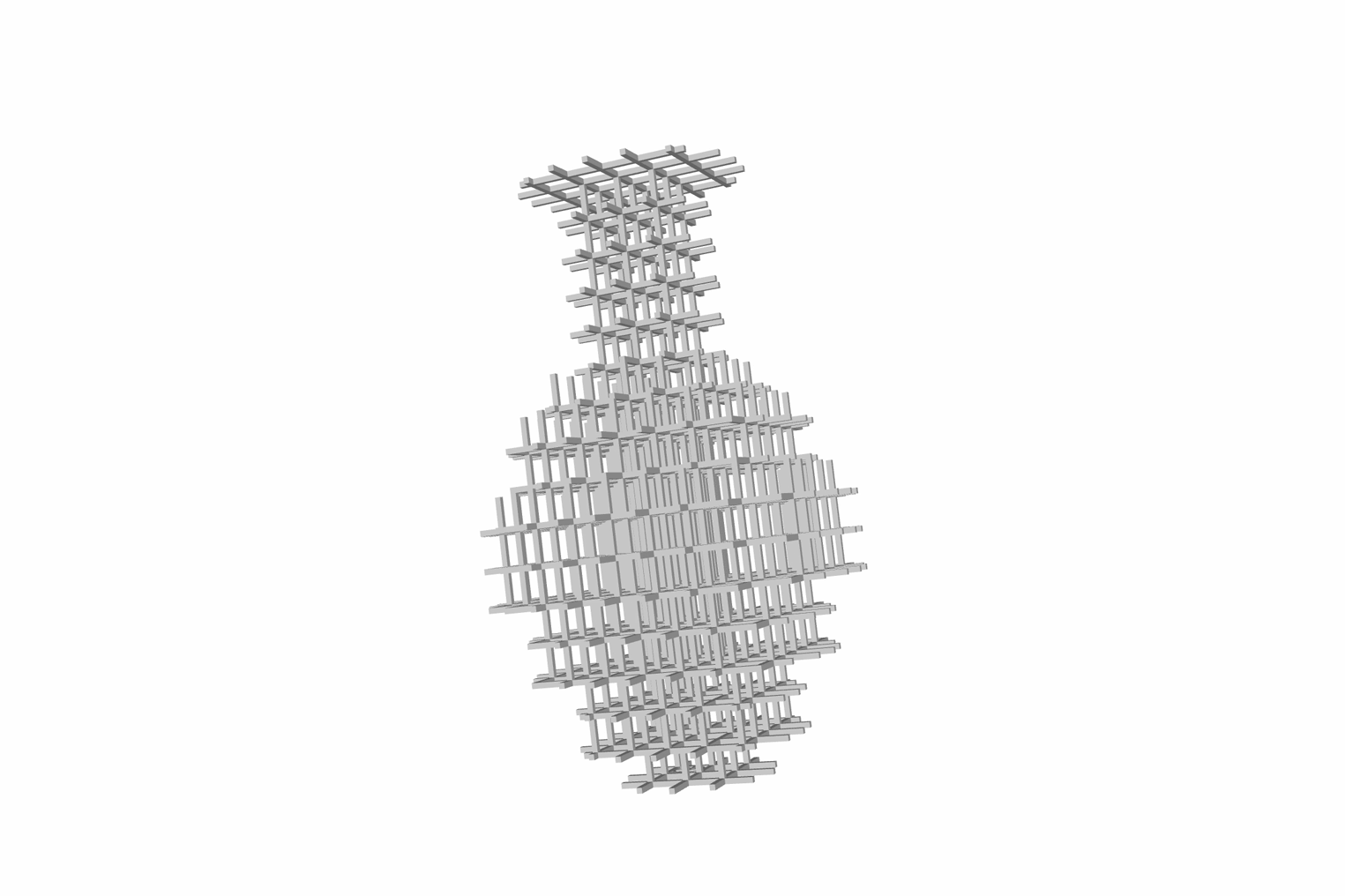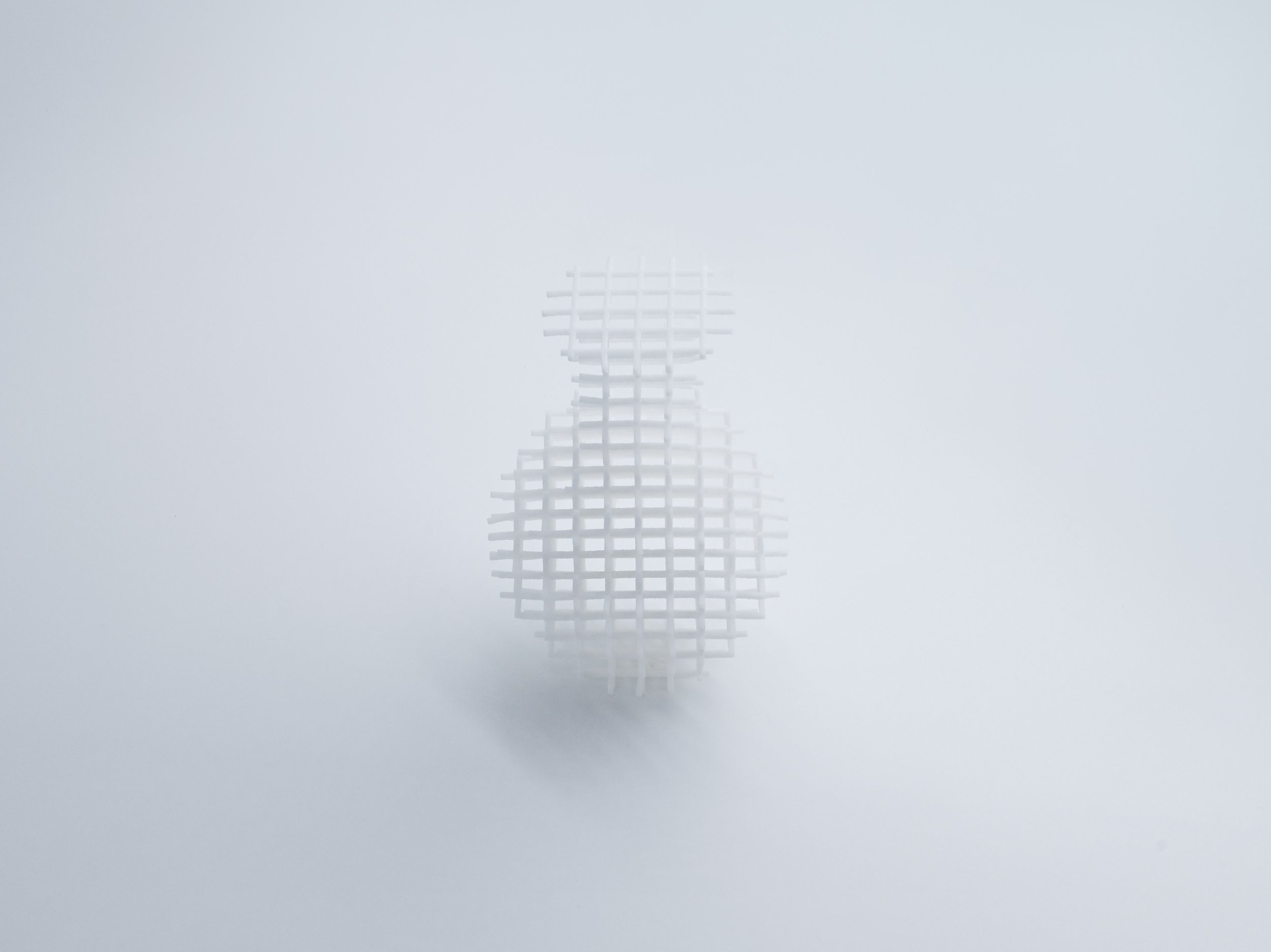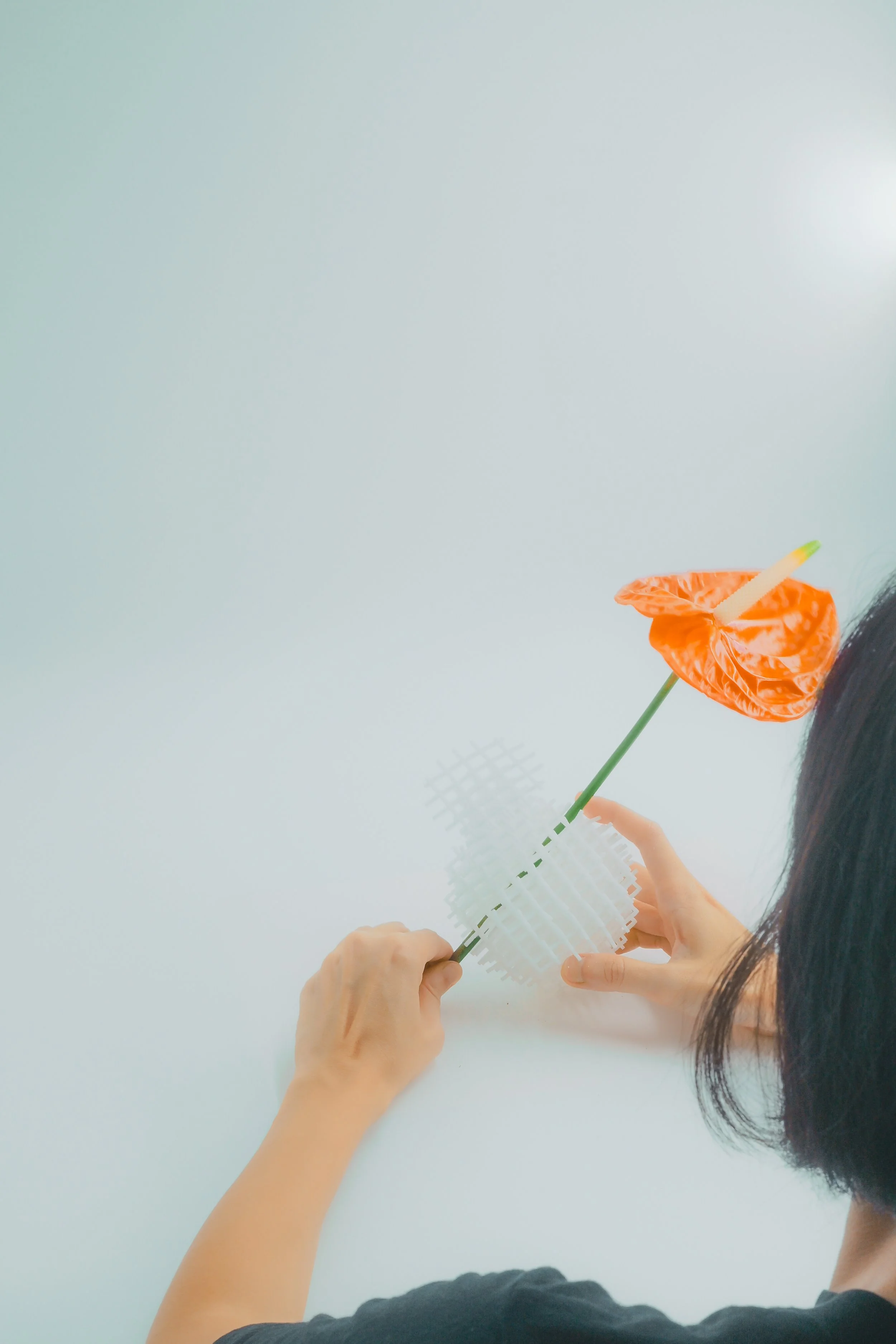The Vessel That Does Not Contain
Text and Images by Siew & Yang Design Office
The Gridvase was not merely an object born out of our design methodology. Our interest in Ikebana played a greater role in leading us to think differently about the floral vessel. Among the many schools of Ikebana that we have encountered, the one that drew us most was the Sogetsu school. Its theatricality and avant-garde approach inspired us to rethink what Ikebana – or flower arrangement in general – could be.
After attending numerous Sogetsu’s Ikebana exhibitions, we began to notice not only how distinct each school’s style was, but also how iconic and unconventional the vessels used by Sogetsu practitioners could be. At times, there was no vessel at all. That observation shaped our thinking: perhaps a vessel does not exist solely to contain the arrangement, but the way in which the flowers could be held by the vessel could be the concept of the arrangement.
The idea of exploring alternative ways for a vase to hold flowers led us to deconstruct the vase using our methodology. The Grid Vase is the result of this exercise – a vessel designed to inspire new ways of arranging or perceiving flowers. Its diffused form offers not just a single opening, but multiple ones. In fact, the entire form can be seen as a series of openings and opportunities to hold flowers. There is no prescribed direction for where flowers should or could enter. It does not simply contain; rather, it holds – all while retaining the familiar silhouette of a vase in a lattice structure.
(The amount of support required to print the Gridvase using a Fused Deposition Modeling (FDM) printer would make this form nearly impossible to produce, as removing the supports afterward would be unfeasible.)
The Gridvase’s complex and intricate structure was made possible through Selective Laser Sintering (SLS) 3D
printing. This method uses a high-powered laser to fuse particles of powdered material, typically nylon plastic, layer by layer. The technique enables the highly detailed form to be printed without requiring support structures, which eliminates the need to remove supports from areas that would otherwise be inaccessible after printing.
After experimenting with various substrates, the first series of Gridvases were printed using TPU, a thermoplastic elastomer. Intrigued by TPU’s elasticity, we were able to introduce our second method of conscious subtraction: distortion. Distortion deconstructs perception and engages the senses, questioning the physics of objects by asking –what if something typically perceived as rigid and hard were instead soft and flexible? What new perception would that create?

For the Gridvase, the lattice structure not only provides diffusion but also offers porosity that allows flexibility – the ability to hold stems and flowers in many different ways. It becomes a vessel that holds flowers in all directions, accommodating blooms of various sizes and shapes, rather than a container with a single fixed function.








